Melanoma is one of the world’s deadliest cancers, yet it is also one of the most preventable. This aggressive type of skin cancer develops from melanocytes, the cells responsible for producing melanin, the pigment that gives our skin its color. Melanoma can lead to serious complications if left untreated, making early detection and treatment crucial.
Recently, a time-lapse video has captured the transformation of a dark patch of skin into melanoma, highlighting the importance of vigilance in monitoring skin changes. In this article, we will explore the different stages of melanoma as presented in the video and discuss the available treatment options for each stage.
Understanding Melanoma
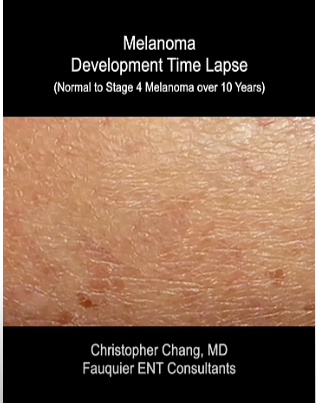
Melanoma typically begins as a benign mole or patch of skin. However, certain factors can trigger the transformation of these benign growths into malignant tumors. The most common risk factors include excessive exposure to ultraviolet (UV) radiation from the sun, a weakened immune system, a family history of melanoma, and specific genetic mutations.
Melanoma progresses through various stages, each with its own level of severity. The earlier melanoma is detected, the better the chances of successful treatment and a positive outcome.
The Video: A Visual Journey Through Melanoma’s Progression
The video created by Fauquier ENT uses AI technology to simulate the development of melanoma over a 10-year period. The rapid progression seen in the later years of the video has been described as “scary” by many viewers, serving as a stark reminder of how quickly melanoma can advance. This video emphasizes the need for consistent sun protection and regular monitoring of skin changes.
Year 1-5: The Benign Stage
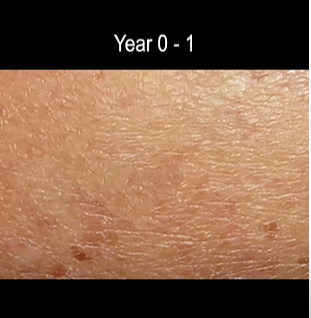
During the first five years, the melanoma is in its earliest form, known as the radial growth phase (RGP). At this stage, the cancer cells are confined to the epidermis, the outermost layer of the skin. They have not yet invaded deeper layers or spread to other parts of the body.
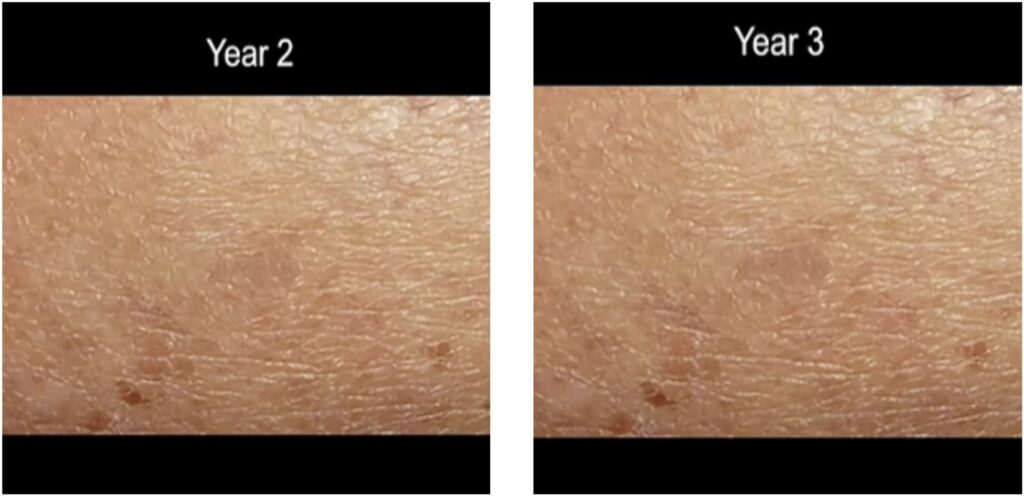
Visually, the melanoma may appear as a small, irregularly shaped mole or a darkened patch of skin. Early-stage melanoma is often treated with surgical excision to remove the affected cells, which can prevent the disease from progressing further.
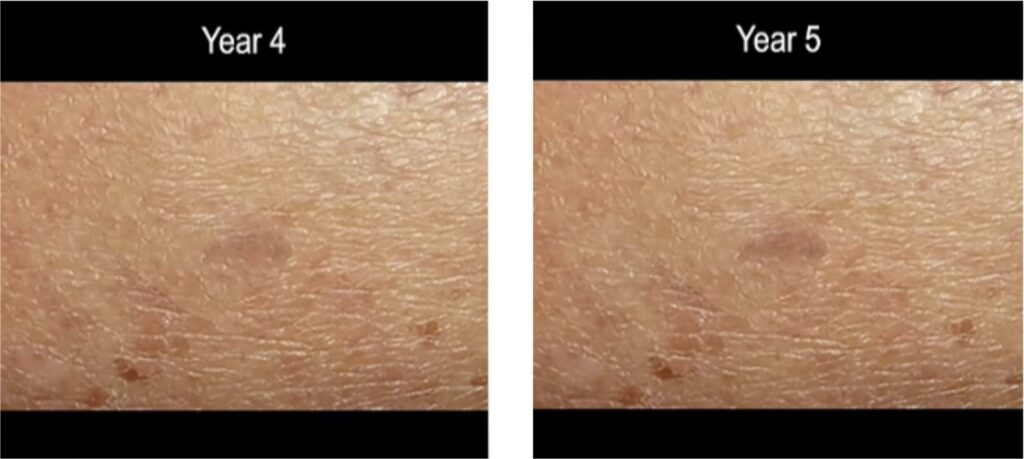
Year 6 & 7: Stage 0 Melanoma
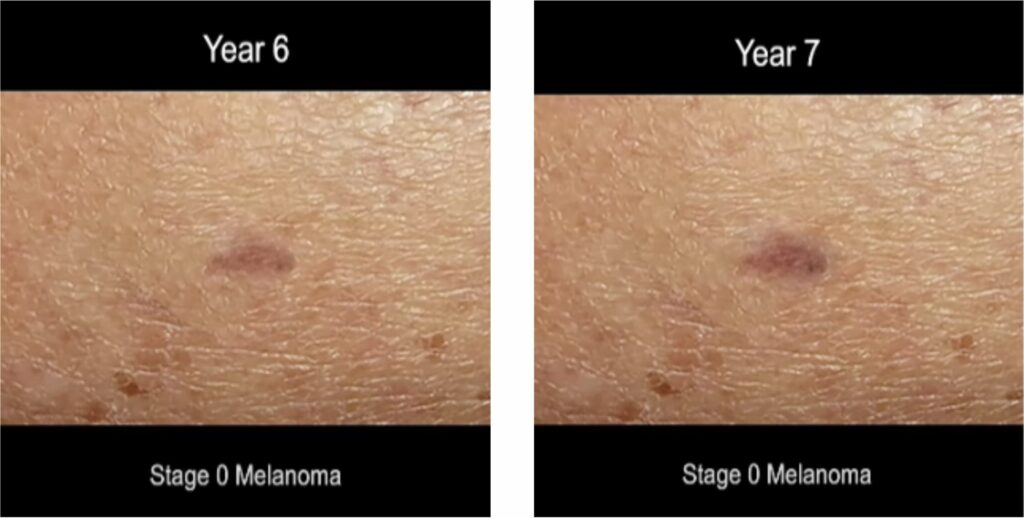
By years six and seven, the melanoma has progressed to Stage 0, also known as melanoma in situ. At this stage, abnormal cells are still confined to the epidermis and have not yet penetrated deeper layers of the skin or spread to other areas of the body.
Treatment for Stage 0 melanoma usually involves surgical excision to remove the abnormal cells. In some cases, additional treatments such as topical creams or photodynamic therapy may be used to ensure that all cancerous cells are eradicated.
Year 8 & 8.25: Stage 1 Melanoma

Stage 1 melanoma, which appears around the eighth year in the video, indicates that the cancer cells have begun to invade the dermis, the deeper layer of the skin. However, at this stage, the melanoma has not yet metastasized to nearby lymph nodes or distant organs.
Treatment for Stage 1 melanoma typically involves the surgical removal of the tumor. A sentinel lymph node biopsy may also be performed to check for the presence of cancer cells in the lymph nodes, which could indicate that the melanoma is beginning to spread.
Year 8.5: Stage 2 Melanoma
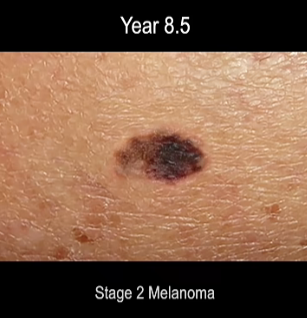
In Stage 2 melanoma, the cancerous cells have started to invade nearby lymph nodes, although they have not yet spread to distant organs. This stage marks a significant increase in the aggressiveness of the disease.
Treatment options for Stage 2 melanoma often include the surgical removal of the tumor and nearby lymph nodes. Additional therapies such as immunotherapy, targeted therapy, or radiation therapy may be recommended to eliminate any remaining cancer cells and reduce the risk of recurrence.
Year 8.75 & 9: Stage 3 Melanoma

By the ninth year, the melanoma has progressed to Stage 3, meaning that the cancer has spread to nearby lymph nodes and may have invaded adjacent tissues. This stage is more challenging to treat and often requires a combination of therapies.
Treatment for Stage 3 melanoma typically involves the surgical removal of the tumor, affected lymph nodes, and any invaded tissues. Additional treatments, such as immunotherapy or targeted therapy, are often necessary to target residual cancer cells. In some cases, radiation therapy may also be employed to reduce the likelihood of the cancer returning.
Year 9.25, 9.5, 9.75, & 10: Stage 4 Melanoma
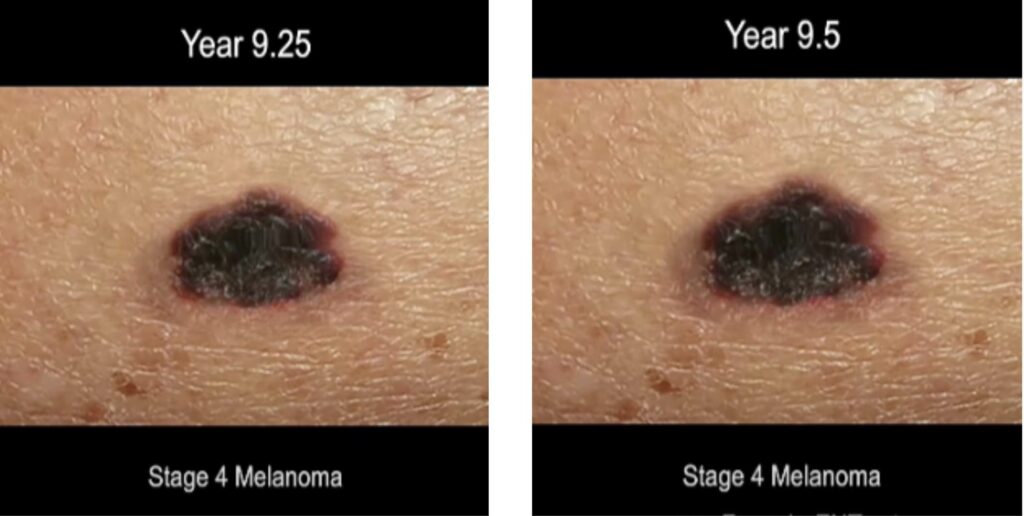
The final years of the video depict the most advanced stage of melanoma—Stage 4. At this stage, the cancer has metastasized to distant organs or tissues, such as the liver, lungs, or brain. Stage 4 melanoma is the most dangerous and difficult to treat, as it has spread beyond the skin and lymph nodes.
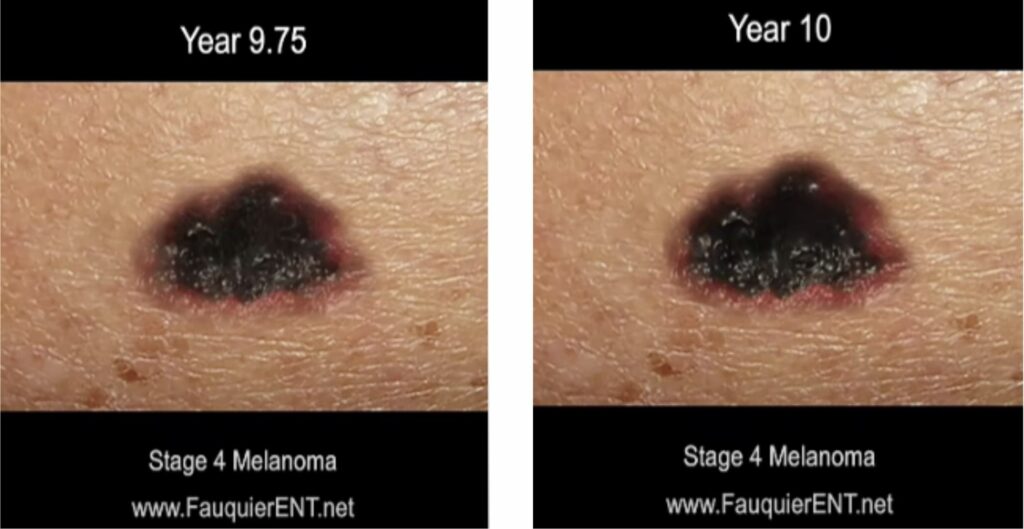
Treatment for Stage 4 melanoma focuses on managing the disease and improving the patient’s quality of life. While a cure is unlikely at this stage, a combination of treatments such as surgery, radiation therapy, immunotherapy, targeted therapy, chemotherapy, and palliative care can help control the spread of the cancer and alleviate symptoms.
Melanoma and Skin Cancer Prevention

Preventing melanoma is crucial, given the aggressive nature of the disease. The most effective prevention strategies include protecting the skin from excessive UV exposure by wearing sunscreen, protective clothing, and avoiding tanning beds. Regular self-examinations of the skin for any suspicious moles or changes in appearance can also lead to early detection, which is key to successful treatment.
Conclusion: The Importance of Early Detection
The time-lapse video showcasing the progression of melanoma from a benign mole to an advanced cancer serves as a powerful reminder of the importance of early detection, diagnosis, and treatment. By understanding the stages of melanoma and the available treatment options, individuals can take proactive steps toward prevention and seek prompt medical attention for any concerning changes in their skin.
The message is clear: staying vigilant and taking early action can make the difference between a treatable condition and a life-threatening disease. Protect your skin, monitor changes, and consult a healthcare professional if you notice anything unusual—because when it comes to melanoma, early detection can save lives.


